Affiliate links on Android Authority may earn us a commission. Learn more.
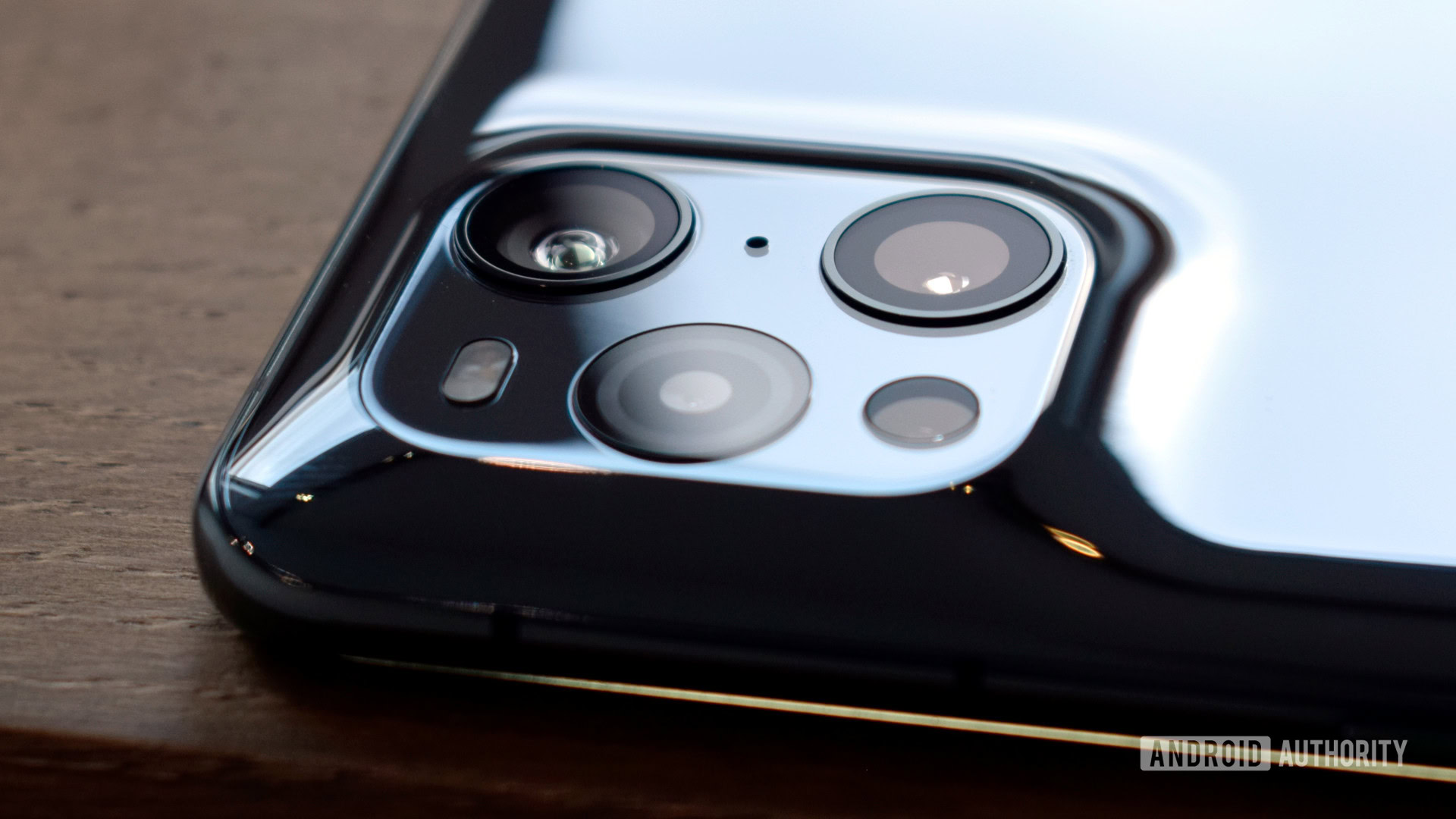
Oppo Find X3 Pro
MSRP:
What we like
What we don't like
Our scores
Oppo Find X3 Pro
Are you tired of lazy copy-and-paste smartphone designs? Do you long for something more eye-catching and unique to spend your money on? Then put down the morning coffee, lean in a little closer, and get ready to drink in OPPO’s new Find X3 Pro flagship.
I’m going to cut right to the chase here: this phone is a looker. Forget ugly square camera housings, bulky lenses, and gaudy colorways, the Find X3 Pro finally offers something strikingly different in the world of flagship Android smartphones. Of course, OPPO has excellent form when it comes to aesthetic design. 2020’s Find X2 Pro was not only fashionable but also had the hardware chops to make it one of the best Android smartphones of the year. So we have high hopes for OPPO’s 2021 flagship.
It’s harder than ever to stand out in the saturated smartphone market but this new design sets OPPO in good stead. But can this chic flagship strike the perfect balance of both form and function? Let’s find out in Android Authority’s OPPO Find X3 Pro review.
Update April 2023: Included references to new competitive models on the market and OPPO’s latest handsets.
What you need to know about the OPPO Find X3 Pro
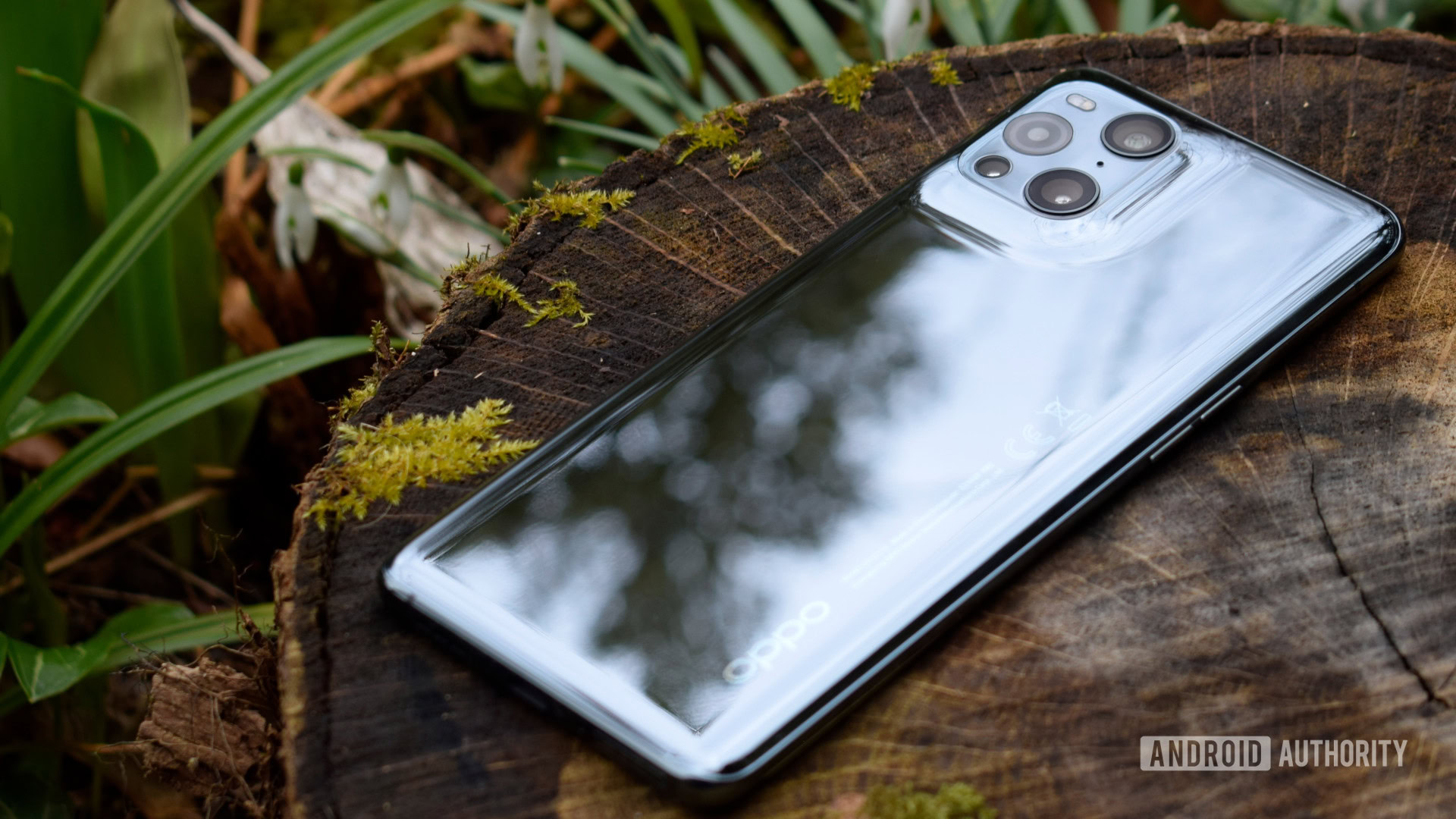
- OPPO Find X3 Pro – 12GB RAM / 256GB storage: £1,099/€1,149 (~$1,520)
The OPPO Find X3 Pro is the flagship product out of the Find X3 series, which also includes the Find X3 Neo and budget-friendly OPPO Find X3 Lite. All three phones hit the UK and other European markets on April 14, 2021. OPPO did not make the Find X3 series available in the US.
As you can probably see by now, the Find X3 Pro is all about aesthetic design. The new look breaks with last year’s leather Find X2 Pro to push a new glass unibody. There’s nothing else quite like it on the market. OPPO offers the Find X3 Pro in Gloss Black, Matte Blue, and White colorways.
Premium design commands premium pricing, and the Find X3 Pro certainly comes with a hefty price tag. The phone launched at £1,099/€1,149, and OPPO still sells it for £949. That keeps it firmly in Apple iPhone 14 Pro and Samsung Galaxy S23 Plus territory, despite its older hardware. OPPO is clearly not afraid to scrap it out with the industry’s biggest players. Although unlike the other two, OPPO continues to include a charger in the box with its latest smartphone.
But this flagship isn’t just about appearances. OPPO bundles in its latest fast wired and wireless charging technologies, a quad-camera setup, and a cutting-edge processor into the package. The Find X3 Pro also boasts a “full-path 10-bit color management system.” What this means is that the camera package, image storage formats, and display all support 10-bit colors to show off your pictures and video in all their glory.
OPPO promises a unique blend of form and function, so let’s see if the Find X3 Pro pulls it off.
Design: Glorious glass
- Glass unibody with aluminum-alloy frame
- 163.4 x 74 x 8.26 mm
- 193g
- In-display fingerprint scanner, face unlock
- Unibody design
- Gorilla Glass 5 display protection
- IP68
- Gloss Black, Matte Blue colorways
The OPPO Find X3 Pro is an eye-catching piece of hardware. OPPO says it took 2,000 attempts to get the hot-forged glass process just right, and the unique unibody that extends up the camera housing is quite something to behold. I like it, but this look may well split the crowd, as there’s something a little alien about its appearance. More so as the Find X3 Pro makes some camera hardware compromises to make the unibody a reality. But more on that later.
As striking as the Gloss Black model I reviewed is, it’s an absolute fingerprint magnet. If this would be an irritant for you, OPPO offers a Matte Blue colorway that it claims is fingerprint-proof. The glass unibody is accompanied by an aluminum-alloy frame around the edges. Combined with the impressive 92.7% screen-to-body ratio, 3D curved display, and lightweight thin design, the handset definitely stands out from the crowd.
The Find X3 Pro is a welcome break from lazy copy and paste smartphone designs.
You’ll find a small speaker grille at the top and bottom of the handset, which produces passable stereo audio via Dolby Atmos. Although, like most smartphones, there’s a distinct lack of bass for music and film. They’re average speakers at best. The SIM tray and USB-C port are found alongside the bottom speaker. As for the buttons, you’ll find the power button on the right and volume rocker on the left, both within easy reach when using the phone in one hand.
Oppo’s Find X3 Pro promises an IP68 rating for water and dust resistance and can survive being submerged in fresh water up to 1.5 meters for half an hour. Finally, there’s an in-display fingerprint scanner that works as snappily as the best security options on the market right now. Face unlock also works, though this relies solely on the camera without any fancy depth or face-detecting hardware.
Display: All the bells and whistles
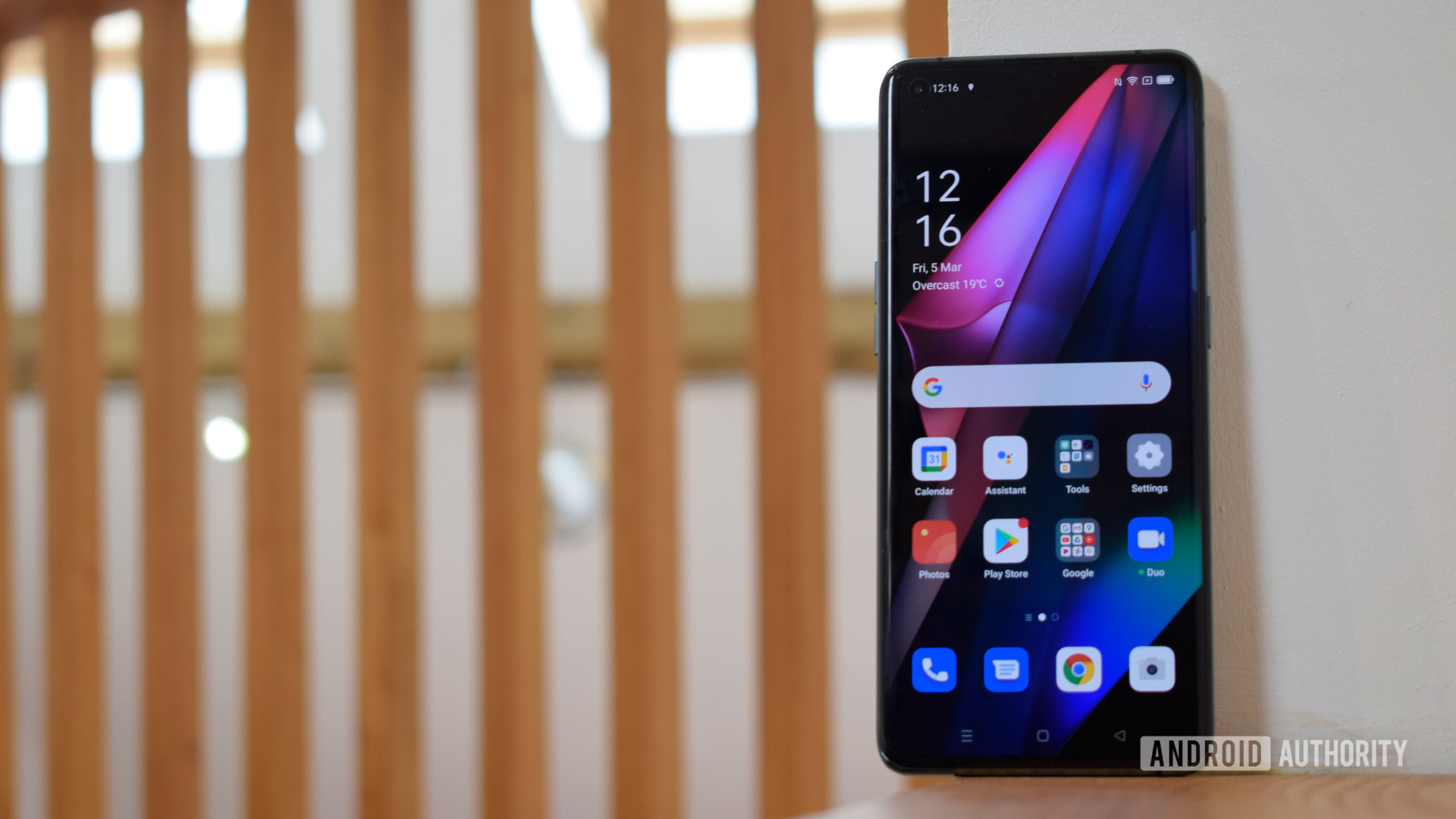
- 6.7-inch curved LTPO AMOLED display
- 3,216 x 1,440 resolution
- 525ppi
- 120Hz variable refresh rate, 240Hz touch sampling rate
A 6.7-inch, QHD+, 120Hz, curved LTPO AMOLED display is as high-end as you can find on the market right now. The display defaults to an FHD+ resolution of 2,184 x 1,080 out of the box, so you’ll need to dive into the settings to get the maximum out of it. OPPO also claims high color accuracy, 1300 nits of peak brightness, HDR10+ certification, and 100% coverage of the DCI-P3 colorspace to make the most of 10-bit content.
What’s important is how the display appears to the human eye and the Find X3 Pro looks gorgeous. All the content I’ve viewed looks nice and vivid without oversaturation, and the 6.7-inch panel is ample for multi-tasking. The display is also more than bright enough for outdoor viewing, while a 120Hz high refresh rate ensures the UI feels buttery smooth.
Those after a big, bright, bold display will love the OPPO Find X3 Pro.
Interestingly, the 120Hz adaptive display supports a number of different modes depending on the content. 10, 20, 24, 30, 60, 90, and 120Hz modes are all supported for native video playback. This feature didn’t ship at launch, but OPPO has since issued an update to the phone to enable these very low refresh rates. Lower refresh rates help save on power, meaning the display can consume up to 30% less energy than OPPO’s last-gen handset. That’s a pretty significant improvement.
The slight curve to the panel ensures the device remains usable in one hand. Although reaching for the notification shade is a stretch for anyone at this size. Fortunately, the display isn’t so curved as to ruin the viewing experience or make interacting with apps awkward. All in all, it’s a very nice display setup.
Performance: efficiency wins out over raw speed
- Qualcomm Snapdragon 888
- Adreno 660
- 12GB RAM
- 256GB Internal Storage
With a Qualcomm Snapdragon 888 and 12GB of RAM on board, I had no quibbles about day-to-day performance during my OPPO Find X3 Pro review testing. Apps open up quickly, run smoothly, and there’s no noticeable stuttering when multitasking. There’s no microSD slot to be found, but 256GB of storage should have the vast majority of buyers well covered for years worth of pictures, video, and more.
That said, the Find X3 Pro is quite aggressively tuned for battery life at the expense of peak performance out of the box. All our usual benchmarks ran rather slowly compared to the Snapdragon-powered Samsung Galaxy S21 Ultra and falls some way behind the fastest latest flagship phones. The graph below shows that the phone clocks in closer to the performance of previous generation’s handsets. That’s still adequate for day-to-day performance but not what you’d expect from a flagship smartphone boasting high-end processing technology.
Enthusiasts and gamers can flick on the high-performance mode tucked away under the battery settings. This sees the phone jump back up our benchmark rankings, offering performance closer to what we’d expect from the Snapdragon 888. You don’t need to flick this mode on for gaming, but it does eke out a fraction more graphics performance too. This mode comes with an accompanying hit to device temperature and battery life, although the phone should still make it through a full day of reasonable use.
As is par for the course with all 2021 flagship smartphones, the OPPO Find X3 Pro is a 5G-capable device. The international model supports 13 5G bands for global travel. However, none of these are mmWave bands. This isn’t an issue as such for most international customers, as the bulk of Europe, Asia, and most of the world is still using sub-6GHz 5G exclusively for the time being. However, this will change in the next couple of years, so the Find X3 Pro isn’t the most future-proof 5G purchase.
Battery: more than a day’s worth, maybe two
- 4,500mAh battery capacity
- 65W SuperVOOC 2.0 wired charging (included in the box)
- 30W AirVOOC wireless charging
- 10W reverse wireless charging
With a large 4,500mAh battery capacity and the aforementioned performance cap, the OPPO Find X3 Pro offers exceptional battery life. I easily made it through a full day of use, shooting photos and browsing the web. You can expect to see at least six hours of screen-on time from a single charge, meaning that most users can make it well into a second day before reaching for the adapter.
OPPO’s 65W SuperVooc 2.0 plug bundled with the Find X3 Pro charges the phone from empty to full in just 31 minutes. You’ll hit 50% charge in as little as 11 minutes, meaning you’ll never be short of power. Importantly, the phone’s internal temperature reading didn’t exceed 40°C (or even 35°C on a cold day) during the fast charging phase. So the battery stays reasonably cool.
However, OPPO’s 65W SuperVooc 2.0 plug is a rather bulky charger compared with some of the new high-wattage GaN units on the market. The plug also doesn’t support common charging standards, such as USB Power Delivery, so you can’t use it to fast charge laptops or other gadgets quickly.
The OPPO Find X3 Pro charges super-fast... as long as you use the bundled adapter.
What’s more disappointing is that the OPPO Find X3 Pro doesn’t make use of USB Power Delivery or Quick Charge either. This caps the phone at less than 10W of charging power from other adapters and means you’ll be waiting hours for the phone to fully charge. This is very poor for a flagship smartphone, so don’t misplace that bundled 65W plug.
Wireless charging support is similarly hit-and-miss. I don’t have an AirVooc charger to test the Find X3 Pro’s fast wireless charging capabilities, although OPPO says this is fast enough to fully charge the phone in 80 minutes. I obtained 10W from a more universal Qi charging pad, but that will take a couple of hours to hit full charge. Meanwhile, reverse wireless charging works well enough to charge up small, low-power gadgets.
Camera: Two out of four ain’t bad
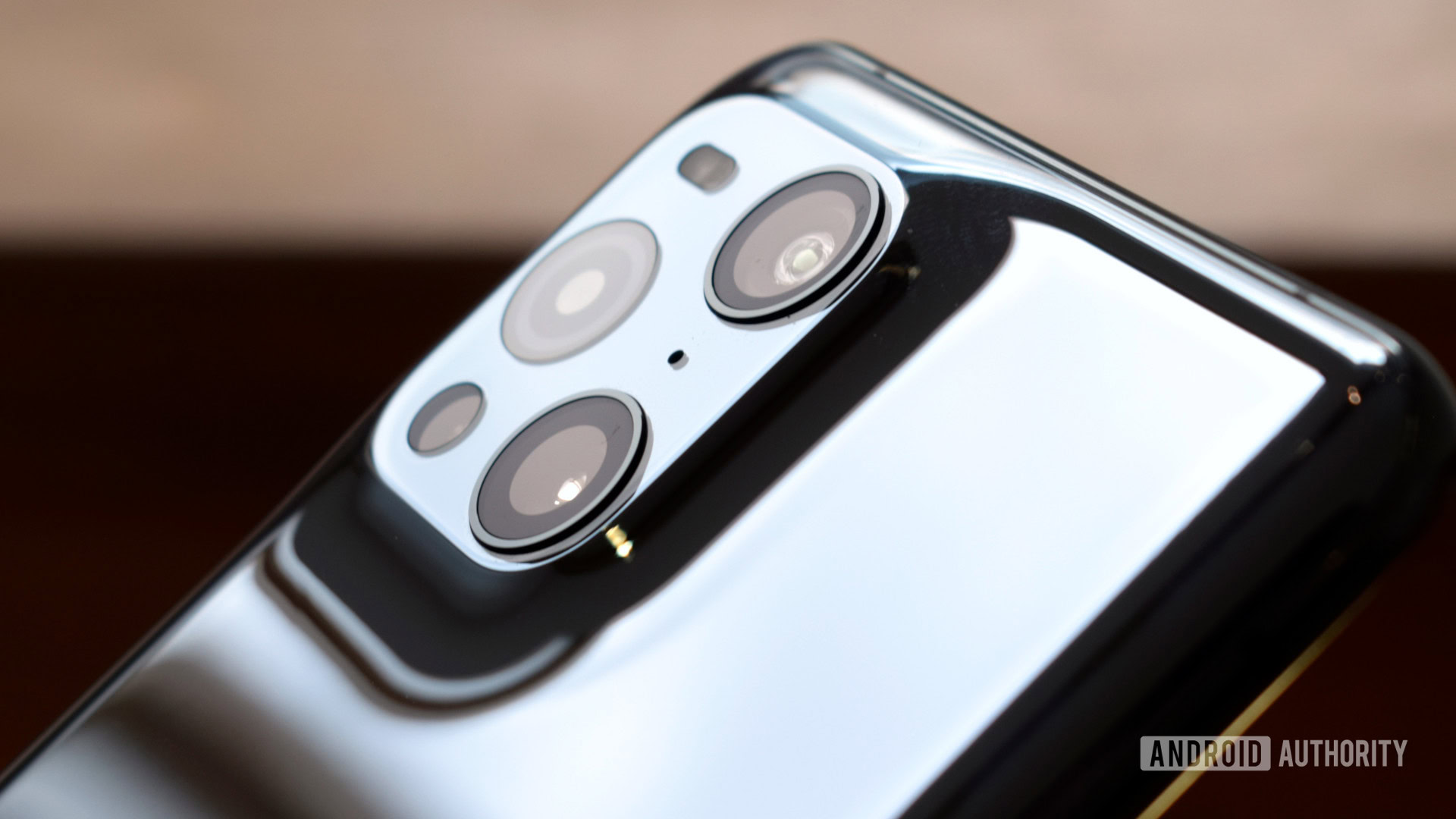
- 50MP main (f/1.8, 1/1.56-inch sensor size, OIS, all-pixel PDAF)
- 50MP ultrawide (f/2.2, 1/1.56-inch sensor size, all-pixel PDAF)
- 13MP telephoto (f/2.4, 3x optical zoom, 5x hybrid zoom, 20x digital zoom)
- 3MP microlens (f/3.0, 77-degree FOV, fixed focus, up to 60x zoom)
- Front: 32MP ( f/2.4)
- Video: 4K at 60/30fps, 1080p at 240/60/30fps, 720p at 480/60/
30fps - Selfie video: 1080p at 30fps, 720p at 30fps
The OPPO Find X3 Pro boasts a rather novel camera setup. There are not one but two custom-built Sony IMX766 sensors designed specifically for OPPO, which reside in the main and ultrawide 50MP rear cameras. These cameras are paired with a 5x hybrid zoom (3x optical) telephoto camera. This is a downgrade from the OPPO Find X2 Pro’s 5x periscope zoom camera, a trade-off resulting from the unibody design of the camera housing.
OPPO augments this setup with a new 3MP “microlens” that takes extreme macro shots with up to 60x magnification. The results from this camera can be quite striking and it’s quite fun to spend a few minutes inspecting the micro-world around you. Sadly, the results are often a bit too noisy and low-res to use as wallpapers and the like, and it’s ultimately still a gimmick that most users will forget about after a week. This is partly because it’s a nightmare to use without image stabilization, and the fixed focal point requires you to be within 3mm of your subject, but not right on top of it. Frankly, it’s a pain to take pictures with.
The more serious cameras fair a lot better. The two 50MP Sony IMX766 sensors in the wide and ultrawide cameras produce excellent images in good lighting, and the identical hardware ensures a consistent look between the two. Colors can be exceptional, rivaling the best smartphone cameras around. However, the Find X3 Pro can produce its share of oversaturated and overexposed images. Cropping in on the pictures reveals a dose of sharpening, but it’s not too overbearing, and details are generally very good. It’s definitely a rival to some of the best camera phones money can buy.
OPPO’s HDR effect is perhaps the main camera’s only weakness, leaving some images looking overprocessed. Speaking of HDR, the handset can’t use this technique and apply portrait blur simultaneously. A minor irritant, but one that cropped up in a few pictures I took on a sunny day.
OPPO also makes a big deal about its 10-bit color path from camera to display. My eyes can’t really see what all the fuss is about, as tricky HDR images captured in 8-bit and 10-bit appear identical on the Find X3 Pro’s display. Overall, few will complain about the full-frame pictures this smartphone can produce.
The ultrawide camera is every bit as good as the main sensor, color, and detail-wise. It also doubles up as a macro camera for taking close-ups. While there’s familiar lens distortion around the edges of these images, it’s kept reasonably well under control.
Low-light photography is more hit-and-miss. The handset’s Night mode helps to improve exposure and color. However, finer details still look rather smudgy and noisy. Night mode is perfectly serviceable, but it’s not as good as you’ll find on rival smartphones that have larger image sensors.
The telephoto camera is where we start to see bigger issues, as it often looks third-rate compared to the other lenses. Color grading is often obviously washed out compared to the Sony IMX766 cameras. Details hold up pretty well to 5x in good lighting, but there’s a sharpening pass that ruins the look if you crop in further. In slightly less ideal lighting conditions, the zoom camera is very noisy and notably poorer in quality than the other cameras. OPPO says that most of its consumers prefer wide-angle versus zoom cameras, but that’s not an excuse for such a significant downgrade.
The selfie camera is better, as details and skin textures look very good, although skin tones are a little too warm. However, the sensor struggles with exposure, with backgrounds often appearing too dark or too light. This can wash out colors when compared to the main sensor. The fact that you can’t use the portrait mode and HDR at the same time exacerbates the HDR issue. OPPO’s HDR implementation is again rather overzealous, as you can see in the example below.
The video footage I shot follows the same pros and cons as taking photographs. Colors are vivid and daylight results look great, although you will notice lots of grain when shooting in dimmer conditions. The “Ultra Steady Pro” toggle is a nice touch for removing shake from your videos and OPPO’s “Film” mode provides a huge range of shooting options, including shutter and ISO controls, LOG-format, and HDR toggles.
This brings me to the camera app. The formula is pretty much set these days and OPPO doesn’t deviate too far from the mean. You’ll find the usual options within easy reach and more advanced shooting options, such as the microlens, off to the right-hand side. The Find X3 Pro also offers advanced photography and cinematography modes that offer all the levels of control you could possibly want.
Overall, the OPPO Find X3 Pro camera setup is good but a little too inconsistent for my liking. The main and wide-angle cameras are great and the setup can take some exceptional photographs. However, the telephoto zoom camera, low light, and HDR implementation are a bit off the pace for an expensive flagship smartphone. As fun as the microlens is, it’s a gimmick that most will quickly forget about.
You can check out the full-resolution camera samples in this Google Drive folder.
Software: Color OS keeps getting better
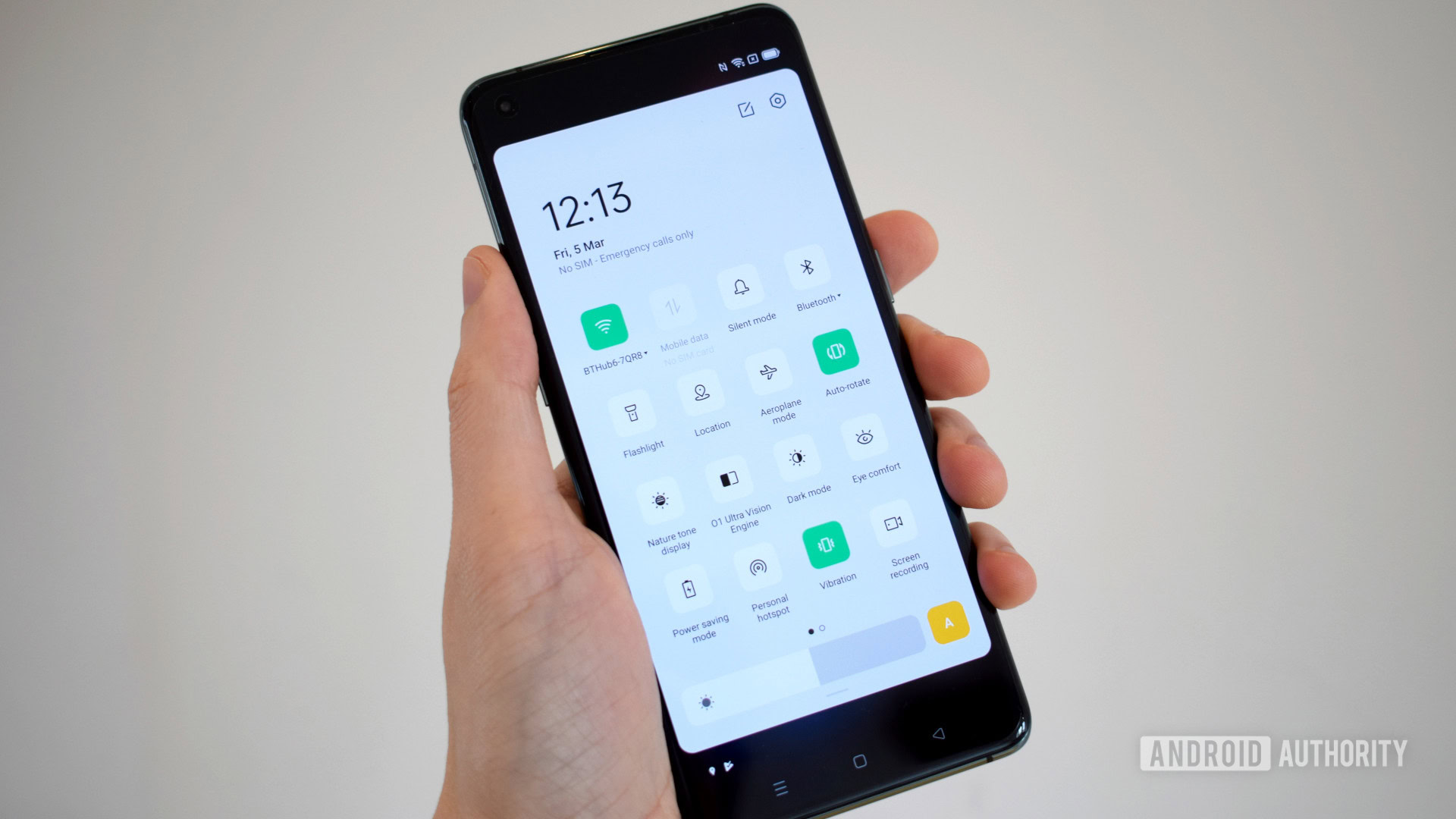
- Android 11
- Color OS 11.2
Color OS 11.2, based on Android 11, is simultaneously a lightweight yet also overwhelming deep Android skin. It’s snappy, reasonably good-looking, and isn’t overly bloated with extra apps. The Find X3 Pro comes with various Google apps, along with Facebook, Netflix, and O Relax pre-installed. A Google Discover feed sits on the left-most home screen. OPPO also includes a few pieces of its own software, like Game Space for optimized gaming, Clone Phone, and other standard apps for weather and the like. But that’s it for “bloat.”
As expected from an Android 11 smartphone, day-to-day use is simple and sturdy enough. However, OPPO certainly packs in plenty of extras for those who want to route through the gargantuan settings menu. Color OS’ greatest strength and biggest weakness is the sheer range of customization options and extras.
For example, the entire skin is customizable. Options range from adjustable home screen layouts, app and fingerprint icons, colors, font, and notification shapes. That’s before you get on to the huge range of always-on display options, tweakable dark mode settings, and edge lighting options. You can definitely make this phone your own, providing you’re willing to put the work in.
On top of all that, OPPO includes a huge selection of “Convenience tools.” This menu includes further options for swipe and off-screen gestures, as well as screenshot shortcuts. Toggles for OPPO’s Quick Launch, Smart Sidebar, and Google Assistant power button toggle can also be found here. It seems a bit random what’s enabled by default on the Find X3 Pro, so you might want to dive through these menus to find out what you like.
Color OS is customizable almost to a fault.
OPPO’s ethos seems to be that if it exists, there should be a toggle for it. As a result, Color OS can be a rather unwieldy beast. Fortunately, the Find X3 Pro comes setup easy to use out of the box, and Color OS 11 is definitely an improvement compared to OPPO’s software from just a couple of years ago.
Finally, OPPO’s update promise is sadly not as comprehensive as some of its rivals. But it has promised three years of security updates and two OS upgrades for the Find X3 Pro. The handset has now seen Android 12 and Android 13 upgrades, complete with the latest ColorOS features. That’s both of its OS upgrades used up.
OPPO Find X3 Pro specs
| OPPO Find X3 Pro | |
|---|---|
Display | 6.7-inch LTPO AMOLED Curved QHD+ 3,216 x 1,440 at 525PPI Adaptive 120Hz refresh rate HDR10+ certified |
Processor | Qualcomm Snapdragon 888 |
RAM | 12GB LPDDR5 |
Storage | 256GB UFS3.1 |
MicroSD | No |
Battery | 4,500mAh 65W wired charging 30W wireless charging Reverse wireless charging |
Cameras | Rear: - Wide-angle: 50MP, ƒ/1.8, 1/1.56" sensor with OIS and all-pixel PDAF - Ultra-wide: 50MP, ƒ/2.2, 1/1.56" sensor with all-pixel PDAF - Telephoto: 13MP, ƒ/2.4, with 5x hybrid zoom - Microlens: 3MP, ƒ/3.0 with fixed focus Front: - 32MP, ƒ/2.4, with OIS |
Connectivity | 4G LTE support 5G (sub-6GHz, SA and NSA) Wi-Fi 6 support Bluetooth 5.0 |
Operating System | Android 11 (Color OS 11.2) |
Water resistance | IP68 |
Security | In-display fingerprint scanner, face unlock |
Color | Gloss Black, Blue |
Dimensions and weight | 163.4 x 74 x 8.26 mm 193g |
Value and competition

Just like all its recent flagships, OPPO priced the Find X3 Pro right at the top of the market. As we mentioned earlier, the launch £1,099/€1,149 price and even today’s slight reduction falls right in the premium section of the market. As the phone is nearing end-of-life, you’re better off looking at the newer Find X5 Pro ($999 at Amazon), which can often be found for similar prices or even cheaper than the Find X3 Pro.
Alternatively, the Apple iPhone 14 Pro ($799.99 at Amazon) and Samsung Galaxy S23 Plus ($999.99 at Samsung) come with faster processors, better cameras, and robust update pledges for around the same price as OPPO’s greatest.
If you’re not quite willing to spend top dollar, the OnePlus 11 ($1296 at Amazon) offers improved processing power, similar cameras trade-offs as the Find X3 Pro, and has a solid long-term update pledge. Likewise, the Google Pixel 7 Pro ($589.98 at Amazon) is an excellent allrounder that has everything going for it, except absolutely blazing-fast performance, and it doesn’t cost the earth.
OPPO Find X3 Pro review: The verdict
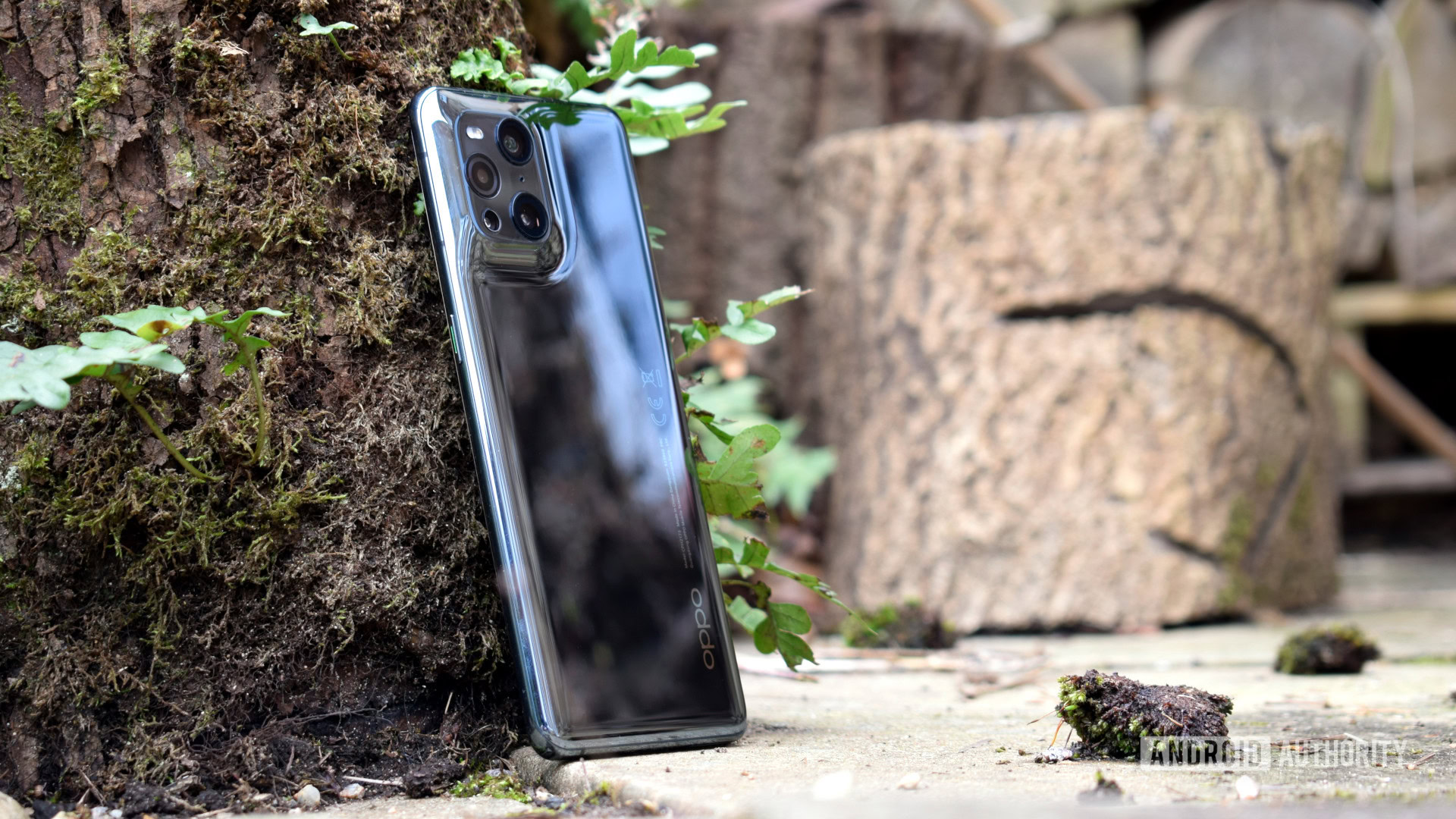
During the course of my OPPO Find X3 Pro review, I experienced both elation and frustration, as we did in our second opinion too. The Find X3 Pro is an exceptional smartphone and not just in terms of its design. Providing you take pictures in the right conditions, stick with SuperVOOC chargers, and don’t mind the odd fingerprint (or several), the handset is an absolute delight.
However, stray from this path and the phone is quick to show its faults. In particular, I can’t fathom why a flagship smartphone can’t quick charge with third-party accessories and adapters. The phone’s performance throttling and lack of mmWave 5G also raise an eyebrow with such an expensive price tag.
The OPPO Find X3 Pro is a particularly well-groomed jack of all trades
As with all major purchases, picking the Find X3 Pro over other handsets boils down to what you need. The phone excels in the display and battery life departments, and these are by far its greatest strengths. The camera setup, while a little gimmicky, is great if you love taking wide-angle pictures. And the design, well it speaks for itself.
The OPPO Find X3 Pro was a stunning handset when it launched, and the hardware has aged well. That said, the short update pledge means the phone is fast approaching the end of support. Instead, there are some excellent alternatives worth picking up at similar and lower price points, that’ll last you a lot longer.